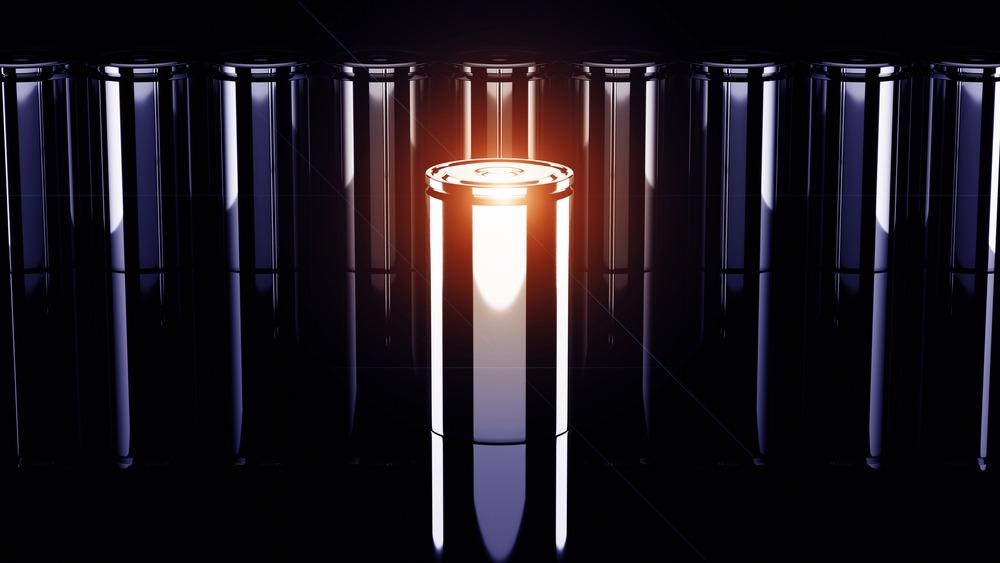In a paper published in the journal Colloid and Interface Science, a group of researchers from China developed a new enhanced polysulfide adsorption material in lithium-sulfur batteries by wrapping reduced graphene oxide on boron nitride nanosheets.

Study: Boron Nitride Nanosheets Wrapped by Reduced Graphene Oxide for Promoting Polysulfides Adsorption in Lithium-Sulfur Batteries. Image Credit: P5h/Shutterstock.com
What are the Limitations of Lithium-Sulfur Batteries?
Lithium-sulfur (Li-S) batteries have garnered considerable attention due to their high specific capacity of 1675 mAh/g, high availability, low cost, and nontoxicity of sulfur.
However, their commercialization has been hindered due to low conductivity of sulfur, low utilization of sulfur by its discharge products (Li2S2/Li2S), high polarization, the damage of the electrode due to very high volumetric expansion up to 80% during cycling, and the shuttling effect of soluble polysulfides could cause low discharge capacity, weak cycling stability, and poor rate capability.
What is the Current Progress in Resolving these Issues?
Several carbon-based materials, such as carbon nanofibers, graphene, carbon nanotubes (CNTs), and micro/mesoporous carbon have been widely applied as sulfur cathode hosts, owing to their excellent electronic conductivity and diverse 2D and 3D structures.
However, the nonpolar carbonaceous materials have a weak affinity towards polar polysulfides, thus they cannot effectively suppress polysulfides shuttle by physical confinement. Polar metal compound/carbon composites as sulfur host materials to immobilize lithium polysulfides (LiPSs) by strong chemical interactions is a major area of research in Li-S batteries.
Up until now, 2D metallic materials were used as sulfur anchoring material to tackle the polysulfides shuttling, but 2D non-metallic materials such as BN nanosheets have shown potential for anchoring polysulfides.
Considering polysulfide anchoring potential of BN nanosheets, excellent conductivity, and mechanical strength of graphene oxide (GO), and the synergistic effect between BN nanosheets and reduced graphene oxide (rGO) nanosheets, three-dimensional BN-rGO microspheres are an excellent choice due to high electronic conductivity, strong interaction with soluble LiPSs, and excellent LiPS conversion reactions.
Speeding Up Electric Vehicle Production and Adoption with Lithium-Sulfur Batteries
The distinctive spherical structure of BN-rGO decreases the electron/ion diffusion and supplies enough space to relieve sulfur volume expansion upon cycling and physically inhibit polysulfide dissolution.
How was S-BN-rGO Composite Synthesized?
First, the BN nanosheets were prepared by mixing and ball milling h-BN and boric acid together, then the powder mixture was thoroughly washed with deionized water. S-BN-rGO composites were synthesized by mixing BN nanosheets with graphene oxide (GO) powder, stirred at 200 °C, and reduced by hydrazine hydrate (N2H4·H2O) through a steam bath process.
Finally, the SBNrGO was prepared through a melt-diffusion strategy, where BN-rGO and sulfur were mixed and heated. The obtained 3D BN-rGO microspheres were composed of interconnected BN nanosheets and rGO and acted as efficient sulfur cathode hosts to form S-BN-rGO.
How the Electrode and Electrolyte were Prepared?
A mixture of S-BN-rGO, conducting carbon black (Super P), and polyvinylidene fluoride (PVDF) was dispersed in N-methyl-2-pyrrolidone (NMP) solvent, then the solution was cast on an aluminium foil and dried under vacuum. Finally, the electrodes were cut into small discs. The electrolyte was prepared by dissolving LiTFSI and LiNO3 in 1, 3-dioxolane (DOL) and 1, 2-dimethoxyethane (DME).
What Was the Result?
The SEM image found the diameter of BN nanosheets of several hundreds of nanometers and the microsphere diameter around 2-3 μm. These microspherical structures shorten the lithium ions diffusion path to increase the electron transport and chemically adsorb soluble LiPSs during cycling.
As BN-rGO composite combines the advantages of BN nanosheet electrocatalysts with conductive rGO nanosheets, both improved the sulfur redox kinetics and superior adsorption capability.
Raman spectroscopy of BN-rGO demonstrated a relatively high-intensity ratio (ID/IG), indicating the presence of abundant defects induced by N doping at graphene lattice. The N2 adsorption-desorption results of the BN-rGO displayed a larger surface area than rGO.
This high surface area facilitates the uniform distribution of sulfur and efficient entrapment for LiPSs. The density of states (DOS) patterns of BN exhibits a narrower bandgap than that of rGO, demonstrating that BN modifies the electronic structure of BN-rGO and increases its electron conductivity.
The cyclic voltammetry (CV) curves of the S-BN-rGO electrode display two anodic peaks and two cathodic peaks. These properly overlapped CV curves demonstrated remarkable electrochemical stability and cycling reversibility of the S-BN-rGO electrode.
Additionally, the S-BN-rGO electrode preserved a small potential hysteresis over 100 cycles, suppressing LiPS's shuttling effect and facilitating the redox conversion. The S-BN-rGO electrode manifested an excellent initial discharge capacity of 1137 mAh/g and retained a discharge capacity of 876 mAh/g with a capacity retention of 77% after 100 cycles.
The S-BN-rGO electrode indicates more excellent rate performance, excellent sulfur redox kinetics, and excellent reversibility than that of S-rGO and S-BN electrodes.
Electrochemical impedance spectroscopy (EIS) evaluated the charge transfer resistance of electrodes, in which the S-BN-rGO electrode demonstrated lower charge transfer resistance than S-rGO and S-BN electrodes.
The high specific discharge capacity, high maintained capacity, and low capacity decay rate of the S-BN-rGO lead to the superb long-term stability of the S-BN-rGO electrode because of the physical barrier of rGO and the strong chemical adsorption of BN nanosheets, resulting in efficient confinement of the LiPSs within the electrode side and further restricting the LiPS's shuttling.
Density functional theory (DFT) calculations were also used to verify the strong LiPS’s adsorption capability of BN-rGO.
Reference
W. Gao, Y. Liu, C. Cao, Y. Zhang, Y. Xue, C. Tang, Boron Nitride Nanosheets Wrapped by Reduced Graphene Oxide for Promoting Polysulfides Adsorption in Lithium-Sulfur Batteries, Journal of Colloid and Interface Science (2021). https://www.sciencedirect.com/science/article/pii/S0021979721020038?via%3Dihub
Disclaimer: The views expressed here are those of the author expressed in their private capacity and do not necessarily represent the views of AZoM.com Limited T/A AZoNetwork the owner and operator of this website. This disclaimer forms part of the Terms and conditions of use of this website.